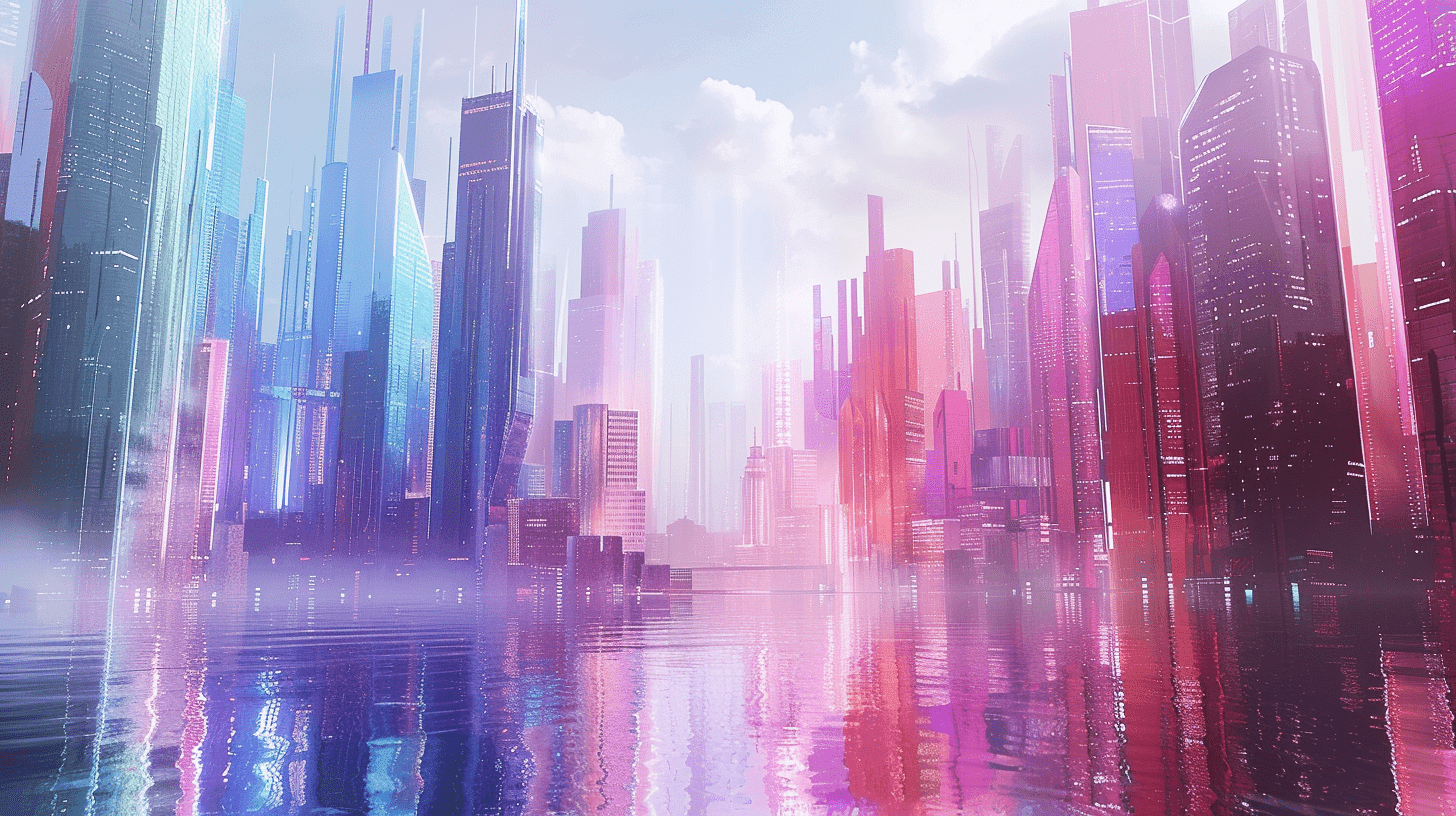Tillbaka
The Future of Sustainable Fashion: Trends and Innovations

Introduction
Sustainable fashion, a movement and process of fostering change in fashion products and the fashion system towards greater ecological integrity and social justice, is more than just a trend - it's a revolution. This revolution is transforming the way we produce, consume, and think about clothing. Unlike traditional fashion, which often emphasizes rapid consumption and short-lived trends, sustainable fashion focuses on the long-term impact of the fashion industry on the environment and society.
In recent years, we've witnessed a significant shift in consumer behavior. People are increasingly questioning the origins of their clothes, the materials used, and the ethical practices of fashion brands. This shift is not just about making more environmentally friendly choices; it's about creating a sustainable system that respects both people and the planet. Why is this shift happening now? Primarily, it's a response to the growing awareness of the environmental damage caused by the fashion industry - from water pollution to excessive waste. The industry is often cited as one of the largest polluters globally, second only to oil. Additionally, social media and increased global connectivity are bringing issues like labor exploitation and unethical practices into the public eye, prompting consumers to demand change.
Sustainable fashion is about finding a balance. It's about designing, creating, and consuming clothes that respect the environment and empower individuals. It's a complex issue that encompasses various aspects - from sourcing eco-friendly materials to ensuring fair wages for workers.
The Rise of Eco-Friendly Materials
One of the most pivotal aspects of sustainable fashion is the choice of materials. The conventional textiles we've relied on for decades, such as conventional cotton, polyester, and leather, have significant environmental footprints. Conventional cotton farming, for instance, is notorious for its heavy use of water and pesticides. Polyester, a synthetic fabric made from petroleum, releases microplastic fibers into the water with every wash, contributing to ocean pollution. The shift towards eco-friendly materials is a crucial step in reducing the fashion industry's environmental impact. Here are some of the innovative materials leading the way:
- Recycled Polyester: Made by recycling existing plastic products, like PET bottles, recycled polyester reduces dependence on petroleum as a raw material and cuts down on waste.
- Organic Cotton: Grown without harmful pesticides and chemicals, organic cotton has a significantly lower environmental impact than conventional cotton.
- Biodegradable Fabrics: Fabrics like Tencel, made from wood pulp, and Piñatex, made from pineapple leaves, are not only sustainable to produce but also biodegradable, ensuring they don't linger in landfills.
- Hemp: Hemp requires less water and pesticides to grow and yields a durable, versatile fabric.
- Wool and Silk Alternatives: Innovations like TENCELTM Lyocell, a fiber made from wood pulp, offer alternatives to traditional wool and silk without the ethical concerns.
These materials are not just eco-friendly alternatives; they represent a shift in thinking about how resources are used and reused in fashion.
"Innovation in fabric technology is key to advancing the sustainable fashion agenda. By choosing eco-friendly materials, we're not just reducing the negative impacts of clothing production but also paving the way for a more circular fashion economy."
This move towards sustainable materials is not without its challenges. The cost of eco-friendly materials can be higher, and availability is sometimes limited. However, as demand increases and technology advances, these materials are becoming more accessible and affordable.
The fashion industry's embrace of eco-friendly materials is a testament to its adaptability and commitment to change. By prioritizing sustainability in material selection, the fashion world is taking a significant step towards a more responsible and environmentally conscious future.
Embracing Circular Fashion
Circular fashion is a transformative approach that challenges the traditional linear model of 'take-make-dispose.' It's based on the principles of designing out waste, keeping products and materials in use, and regenerating natural systems. This model is pivotal in achieving sustainable fashion as it addresses the core issue of waste and resource depletion.
The concept of circular fashion is not just a theoretical ideal; it's being actively implemented by brands and consumers alike. How are brands embracing circular fashion? Many are turning to recycling and upcycling methods. Recycling involves breaking down old garments and reusing the fibers to create new products, while upcycling transforms waste materials into higher quality products. For example, Patagonia's Worn Wear program repairs, recycles, and resells their clothing, keeping it in circulation for as long as possible. Similarly, brands like Eileen Fisher are pioneering take-back programs where customers can return used garments for store credit, after which the garments are either resold or upcycled.
Consumers play a crucial role in this circular model. By choosing to buy from brands that offer repair services, participate in take-back programs, or sell upcycled products, consumers are supporting the shift towards a more circular fashion industry. Additionally, the practice of buying second-hand or vintage clothing also contributes to this circularity, extending the life of garments and reducing the need for new production.
Circular fashion is not without its challenges. Creating a truly circular system requires significant shifts in production processes, consumer behavior, and overall industry standards. However, the potential benefits – reducing waste, conserving resources, and minimizing environmental impact – make it a critical part of the future of sustainable fashion.
Technology's Role in Sustainable Fashion
Technology is playing a crucial and ever-growing role in advancing sustainable practices in the fashion industry. From the way clothes are designed and produced to how they are sold and recycled, technology is helping to reduce waste, increase efficiency, and create transparency throughout the fashion supply chain.
Innovations in Production
Innovative technologies are transforming the production of sustainable fashion. 3D printing, for instance, offers a way to produce clothing and accessories with minimal waste, as it allows for precise production without the excess material typically left over from traditional cutting processes. Likewise, automation and AI are being used to optimize production processes, reducing waste and energy consumption.
Materials and Fabric Technology
Technological advancements are also leading to the development of new, more sustainable materials. Biofabrication is one such area, where materials are grown from living organisms. An example is Modern Meadow's biofabricated leather, which is created without harming any animals. Smart fabrics, which can change properties (such as color or temperature) in response to the environment, also present opportunities for more versatile and longer-lasting garments.
Blockchain for Transparency
Blockchain technology is emerging as a powerful tool for increasing transparency in the fashion supply chain. By providing a tamper-proof digital ledger, blockchain allows consumers to trace the origins of their garments, from the farm where the cotton was grown to the factory where the garment was sewn. This transparency is crucial for verifying the sustainability claims of brands and ensuring ethical practices throughout the supply chain.
E-Commerce and Digital Platforms
E-commerce platforms and digital tools are making sustainable fashion more accessible to consumers. Virtual fitting rooms and AI-driven recommendation engines help reduce returns and waste associated with online shopping. Platforms like Depop and ThredUp make buying and selling second-hand clothing easier and more mainstream, supporting the circular fashion economy.
The integration of technology in sustainable fashion is not just a trend; it's a necessity. As we face the escalating challenges of climate change and resource depletion, leveraging technology to create more sustainable fashion practices is essential. It's a journey of continuous innovation, requiring collaboration between technologists, designers, and industry leaders, but one that holds the promise of a more sustainable and ethical fashion industry.
Why is Sustainable Fashion Important?
Understanding the importance of sustainable fashion is crucial in recognizing why the industry is undergoing such transformative changes. At its core, sustainable fashion addresses two major issues: environmental impact and social responsibility.
Environmental Impact
The fashion industry has a substantial environmental footprint. It's responsible for a significant amount of water consumption, pollution, and greenhouse gas emissions. For instance, it takes about 2,700 liters of water to produce the cotton needed for just one t-shirt – equivalent to what an average person would drink over 900 days. The dyeing and treatment of garments contribute to water pollution, while the production and disposal of clothing generate greenhouse gases.
One of the most pressing concerns is the issue of waste. The fast fashion model encourages disposable fashion – clothes that are worn only a few times before being discarded. This results in massive amounts of textile waste ending up in landfills each year. Sustainable fashion counters this by advocating for durable, timeless pieces and more responsible production and disposal methods.
Social Responsibility
Beyond environmental concerns, sustainable fashion also tackles issues related to labor and human rights. The traditional fashion supply chain is often opaque, making it difficult to trace the origins of garments and ensure fair labor practices. This lack of transparency has led to numerous instances of labor exploitation, unsafe working conditions, and even human rights abuses.
Sustainable fashion promotes ethical practices throughout the supply chain. This includes ensuring fair wages, safe working conditions, and respecting the rights of workers. By choosing sustainable fashion, consumers can support the movement towards a more ethical industry.
"Sustainable fashion isn't just about reducing our environmental footprint. It's also about making ethical choices that impact the lives of the people who make our clothes."
In essence, sustainable fashion is about creating a system that respects and values both the environment and people. It's a holistic approach that seeks to balance the needs of the present with the well-being of future generations.
The Growth of Second-Hand and Vintage Markets
The resurgence of second-hand and vintage clothing is one of the most exciting trends in sustainable fashion. This movement is driven by a growing awareness of the environmental and ethical implications of fast fashion, as well as a renewed appreciation for unique and retro styles.
The Environmental Benefits
Buying second-hand clothing significantly reduces the environmental impact associated with fashion. It keeps clothes out of landfills, reduces the demand for new clothing production, and thus lessens the associated water and energy consumption. For instance, purchasing a second-hand garment extends its life cycle and saves it from becoming waste.
The Economic and Cultural Impact
The second-hand market is not just environmentally beneficial; it's also economically and culturally significant. Vintage and second-hand stores have become treasure troves for fashion enthusiasts looking for unique, affordable pieces. This market supports small businesses and contributes to a more diverse and personalized fashion landscape, moving away from the homogeneity of mass-produced clothing.
The Digital Revolution
Online platforms have played a pivotal role in the growth of the second-hand and vintage market. Websites and apps like eBay, Depop, and Vinted have made buying and selling second-hand clothing more accessible than ever. They've created communities of like-minded individuals who share a passion for sustainable fashion, further fueling the popularity of this movement.
The Shift in Consumer Mindset
The rise of the second-hand market reflects a broader shift in consumer mindset. People are increasingly valuing quality over quantity, uniqueness over conformity, and sustainability over disposability. This shift is a positive sign for the future of sustainable fashion, indicating a move towards more conscious consumption.
"The second-hand and vintage market isn't just about fashion – it's about making a statement. It's about choosing sustainability, uniqueness, and ethical consumption."
In conclusion, the growth of the second-hand and vintage market is a key component of the sustainable fashion movement. It represents a shift in how we view and consume fashion, with a focus on sustainability, uniqueness, and ethics.
Sustainable Fashion Brands Leading the Way
As the sustainable fashion movement gains momentum, several brands are emerging as leaders in this space, setting new standards for the industry. These brands are not just focused on minimizing negative impacts but are actively working towards creating positive change in the fashion world.
Pioneering Sustainable Practices
One of the key characteristics of these leading brands is their commitment to pioneering sustainable practices. This includes everything from sourcing eco-friendly materials to implementing ethical labor practices. For example, Stella McCartney has been a frontrunner in using sustainable materials like organic cotton and recycled polyester, while also advocating for animal rights and ethical labor practices. Another notable brand is Patagonia, which has set high standards for environmental responsibility by using recycled materials and promoting repair and reuse of their garments.
Innovating with Technology
Many sustainable fashion brands are also leveraging technology to reduce their environmental footprint. For instance, Adidas has partnered with Parley for the Oceans to create sneakers made from recycled ocean plastic, showcasing how collaboration and innovation can lead to sustainable solutions. Similarly, Reformation uses advanced water-saving and waste-reducing techniques in its manufacturing processes, proving that high fashion and sustainability can coexist.
Creating Transparency and Consumer Trust
Transparency is another critical aspect for these brands. They are open about their supply chains, production processes, and the impact of their practices. This transparency builds trust among consumers and sets a new standard for the industry. Everlane, known for its radical transparency, breaks down the costs of each product and shares detailed information about its factories, allowing consumers to make informed decisions.
Encouraging Consumer Engagement
These brands also engage consumers in their sustainability journey. They educate about the importance of sustainable practices and how individuals can make a difference. This consumer engagement not only fosters a loyal customer base but also creates a community of environmentally and socially conscious individuals.
"By leading the way in sustainable practices, these brands are not just selling products; they are advocating for a movement. They are redefining what it means to be a successful fashion brand in the 21st century."
In summary, these leading sustainable fashion brands are trailblazers, showcasing how the industry can evolve to be more responsible and ethical. Their commitment to sustainability, innovation, transparency, and consumer engagement is setting new benchmarks and inspiring others to follow suit.
How Can Consumers Make More Sustainable Fashion Choices?
As the sustainable fashion movement grows, consumers play a crucial role in driving this change. Making more sustainable fashion choices isn't just about buying from eco-friendly brands; it's about changing our overall approach to fashion. Here are some practical tips for consumers looking to adopt more sustainable fashion habits.
Mindful Shopping
The first step towards sustainable fashion is to shop mindfully. This means buying less but choosing well. Consumers should consider the quality and longevity of clothing before purchasing. It's about shifting from a mindset of fast fashion consumption to valuing each piece and its lifecycle.
Supporting Sustainable Brands
Consumers can make a significant impact by supporting brands that prioritize sustainability. This involves researching brands' practices and choosing those that align with sustainable values. By doing so, consumers not only get quality products but also contribute to a more ethical fashion industry.
Embracing Second-Hand and Vintage
Incorporating second-hand and vintage clothing into one's wardrobe is another excellent way to practice sustainable fashion. This not only helps reduce waste but also allows for unique and personal style expressions. Platforms like Depop and eBay make it easier to find and purchase second-hand items.
Caring for Clothes
Taking good care of clothes is essential for extending their life. This includes washing them less frequently, using eco-friendly detergents, and repairing them instead of discarding. A simple act like sewing a button can prolong a garment's life and reduce waste.
Educating and Spreading Awareness
Finally, educating oneself and others about sustainable fashion is vital. Sharing information, discussing the importance of sustainability in fashion, and encouraging others to make conscious choices can have a ripple effect in promoting sustainable practices.
"Every small step towards sustainability counts. As consumers, we have the power to drive change in the fashion industry through our choices and actions."
In essence, making more sustainable fashion choices involves a holistic approach that encompasses mindful shopping, supporting ethical brands, embracing second-hand clothing, caring for what we own, and spreading awareness. Each individual's effort contributes to a larger movement towards a more sustainable and responsible fashion industry.
The Future Outlook for Sustainable Fashion
The future of sustainable fashion looks promising, with several emerging trends and innovations indicating a shift towards a more responsible and environmentally friendly industry. This future vision is not just about continuing current practices but involves evolving and adapting to new challenges and opportunities.
Emerging Trends
One of the key trends is the increasing integration of technology in fashion. Technologies like 3D printing and AI are set to revolutionize the way clothes are designed and produced, minimizing waste and improving efficiency. Additionally, there is a growing focus on the development of new sustainable materials. Innovations such as lab-grown leather and bio-fabrics, which offer environmentally friendly alternatives to traditional materials, are expected to become more prevalent.
Consumer Awareness and Demand
Another significant aspect shaping the future of sustainable fashion is the increasing consumer awareness and demand for transparency and sustainability. As consumers become more informed, their expectations from brands are evolving. This demand is driving brands to adopt more sustainable practices and be more transparent about their supply chains and production methods.
Challenges and Opportunities
Despite the positive trajectory, the sustainable fashion movement faces several challenges. One of the primary challenges is making sustainable fashion affordable and accessible to a broader audience. Additionally, there is a need for global standards and certifications to ensure uniformity in what constitutes sustainable fashion.
However, these challenges also present opportunities. They drive innovation, encourage collaborations between different sectors, and push for policy changes that support sustainable practices. The future of sustainable fashion will likely involve a collaborative effort between designers, technologists, policymakers, and consumers.
"The future of sustainable fashion is not just a trend; it's a necessary evolution of the industry. It's about creating fashion that respects both people and the planet."
In conclusion, the future outlook for sustainable fashion is optimistic but requires continuous effort and innovation. It's a journey towards a more sustainable and equitable fashion industry, one that aligns with the broader goals of environmental conservation and social responsibility.
Conclusion
Sustainable fashion is more than a fleeting trend – it's a crucial movement towards a more ethical and environmentally responsible future. Throughout this discussion, we've explored various facets of sustainable fashion, from the importance of eco-friendly materials and circular fashion to the role of technology and consumer action.
The journey towards sustainable fashion is not a straightforward one. It involves challenges, innovations, and continuous learning. But the direction is clear – a future where fashion not only looks good but also does good for the environment and society.
Each one of us, as consumers, has a role to play in this movement. By making informed choices, supporting sustainable brands, and advocating for change, we can contribute to a more sustainable fashion industry. It's about rethinking our relationship with clothes and making choices that reflect our values.
"In the end, sustainable fashion is not just about clothes. It's about shaping a better world through the choices we make every day."
As we look to the future, let's embrace sustainable fashion not just as a choice, but as a commitment to a better, more sustainable world. It's a journey worth taking, for ourselves and for future generations.
Om du gillade inlägget, överväg att gå med i Pyrilia.
Pyrilia är den perfekta platsen att lagra dina tankar, minnen och reflektioner.
Fånga dagliga tankar, lyft fram meningsfulla upplevelser och återupplev dem med vår unika Replay-funktion. Omfamna en resa av förbättrade minnen och självupptäckt. Din berättelse, vackert bevarad.
Prova det

Kolla in våra andra inlägg:




